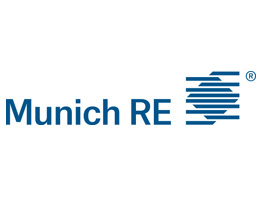Elevated Buildings: Educating Clients on What’s Covered and What’s Not
A very active 2024 hurricane season produced 18 named storms, with five of these becoming major hurricanes: Beryl, Helene, Kirk, Milton, and Rafael. Helene and Milton, two of the most recent storms, brought strong winds and high storm surge to the west coast of Florida, as well as tornadoes throughout the southern part of the state. According to a preliminary estimate from AccuWeather, Hurricane Helene alone is responsible for $145 billion to $160 billion in “total damage and economic loss in the United States.”
The frequency and severity of hurricanes like this, as well as other heavy precipitation events, highlight the critical importance of flood insurance.
While flood insurance is essential to mitigating the financial impact of a flood event, many clients don’t understand the terms in these policies. For example, some of the coastal building owners facing flood losses after hurricanes Helene and Milton did not realize that elevated buildings have very limited coverage below the elevated level.
Property owners need to understand the importance of flood insurance and read their policy thoroughly to find out what it does and does not cover.
The National Flood Insurance Program
Nearly every flood policy held by Americans is written through the National Flood Insurance Program (NFIP). Enacted in 1968 by the Federal Emergency Management Agency (FEMA), the NFIP was created to “protect Americans against the financial hardships of flooding.” It provided flood insurance when no other insurance carriers were able to consistently provide this coverage. While private flood insurance policies are now available, they often follow the same language as the NFIP.
Today, the NFIP safeguards roughly $1.3 trillion in assets with nearly 5 million active policies.
NFIP Coverage Limits for Elevated Buildings
It is important for agents to help building owners – especially coastal building owners – understand that coverage under the NFIP is not all-encompassing, especially below the elevated level.
NFIP coverage below the elevated living floor is limited to things such as central air conditioners, electrical junctions and circuit breaker boxes, furnaces and hot water heaters, heat pumps, well water tanks and pumps, footings, foundations, posts, pilings, piers, or other foundation walls and anchorage systems required to support a building.
Garage doors, exterior doors, windows, and drywall below the lowest elevated level are also typically excluded from coverage.
Understanding Flood Risk and Flood Insurance
Floods are one of the most common weather-related disasters in the U.S., and according to FEMA, “just one inch of floodwater can cause up to $25,000 in damage.” Agents should help clients understand that flooding can occur anywhere, not just in areas considered flood zones. In fact, on average, 40% of NFIP claims come from outside these high-risk areas. For clients located in coastal areas, agents should stress purposefully that every zone is essentially a flood zone.
Encouraging clients to be proactive in purchasing flood insurance also is important. They should be made aware that, after paying for coverage, there is a 30-day waiting period before the policy goes into effect. If a storm is imminent, it’s too late for protection from damage that may occur as a result of the event.
It also is essential for agents to advise clients to build relationships with a trusted panel of experts so that restoration and recovery of their property can move forward more quickly. After a flooding event, there is heightened demand for general contractors, engineers, and remediation companies. Developing strong relationships with experts in these areas long before a disaster occurs helps ensure they are available to begin work on properties as soon as it is safe to do so.
Clients also should know that it takes time for insurance funds to be distributed post-storm. Agents should recommend that clients build up cash reserves or an emergency fund to cover the cost of the insurance deductible as well as repairs and remediation needed before insurance is paid out.
While the 2024 hurricane season is now in the rearview mirror, powerful storms can occur at any time. As the frequency and severity of storms continues to increase, it is important for agents to educate clients on flood insurance, including why it is necessary and what protections it provides. &










